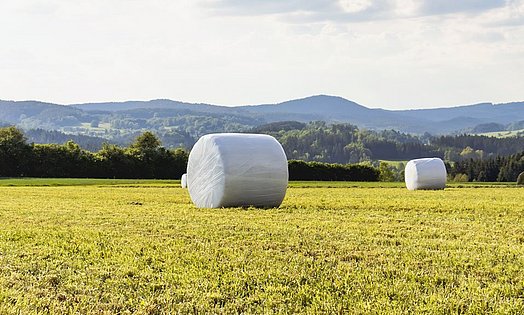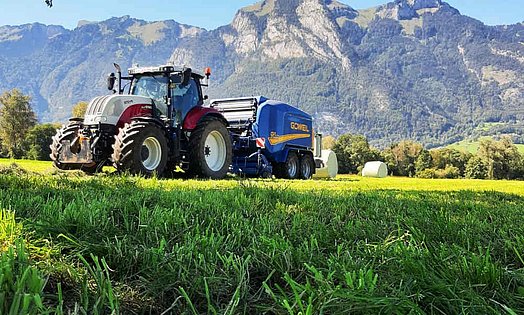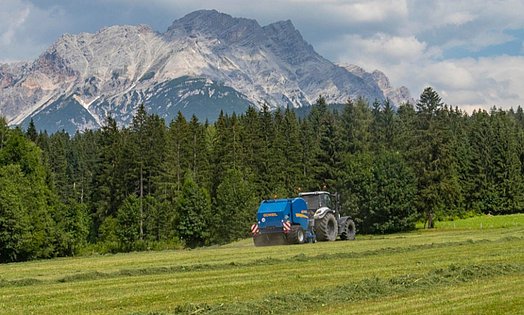Tips on how to achieve the perfect bale deposit
Aside from properly transforming the feed to bales, the way the bales are stored is of paramount importance.
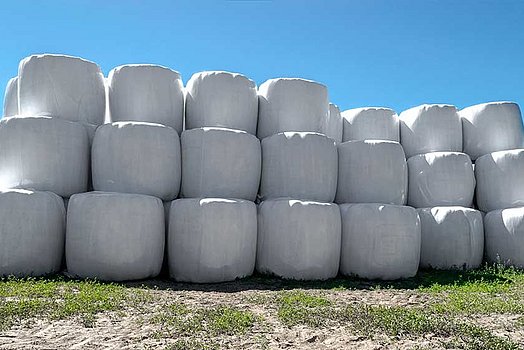
As a general rule, the bales should be kept on a clean, level and stable surface in order to prevent them from shifting or deforming. Time and again, surfaces that have proven to be most appropriate include areas covered by, for example, sand or rubber mats.
We recommend that you place the round bales with their front side facing down as the packaging is strongest on this side. To keep mold and condensation from forming, you should space the individual bales approximately 5-10 cm apart.
Bales that will retain their shape can be stacked up to three bales high. Softer bales should always be arranged in the topmost row, as they will otherwise bend out of shape by the weight resting on them or their film may tear from overstretching.
Rodents, birds and other adversaries
There is a variety of tricks you can apply to protect the bales against damage from mice, birds or other wild animals.
It is essential that you leave narrow passageways between the bales to deny mice the chance to nest. One way to keep birds and their claws at bay is to use a net, held in place, for instance, by car tires that are positioned at a distance to the silage bales.
If stored on the farmyard, the bales should always be placed such that they cannot inadvertently come into contact with the tractor or other types of machinery. Should you, regardless, discover holes, you need to patch up the bales immediately with special adhesive to keep air from penetrating.
Caution with bodies of water
Storing silage bales close to a brook or other bodies of water may have dire consequences.
If bursting their banks, bodies of water may simply sweep away the bales as the density of the bales is lower than that of water. Apart from possibly clogging drains and narrow passageways, causing the water to rise even more rapidly, the bales may subsequently cause severe damage to objects or even put human life at risk.
Worse yet, the bales are usually destroyed and the feed is rendered useless in such cases.
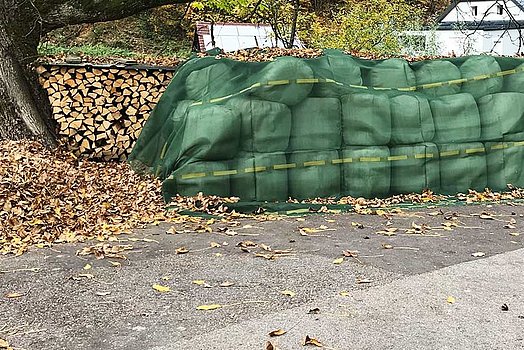
+ The bales are covered perfectly with a net.
- All bales should be stored in the upright position.
- You need to create a certain amount of space between net and bale.
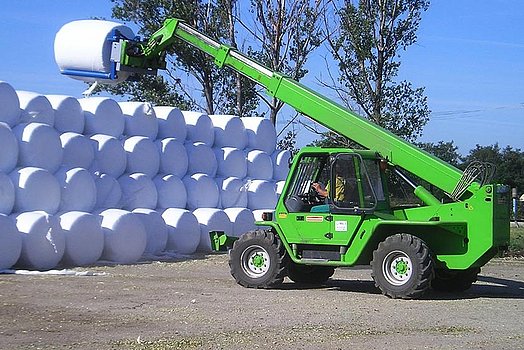
+ The stable surface is perfect.
- All bales should be stored vertically rather than horizontally.
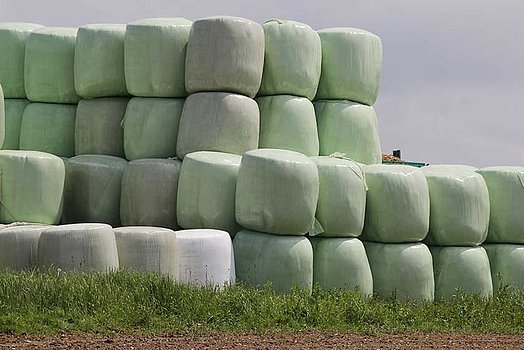
+ The bales are stored upright.
- The spacing between the bales is too low.
- The surface selected is not stable.
- Too many bales stocked on top of each other.
